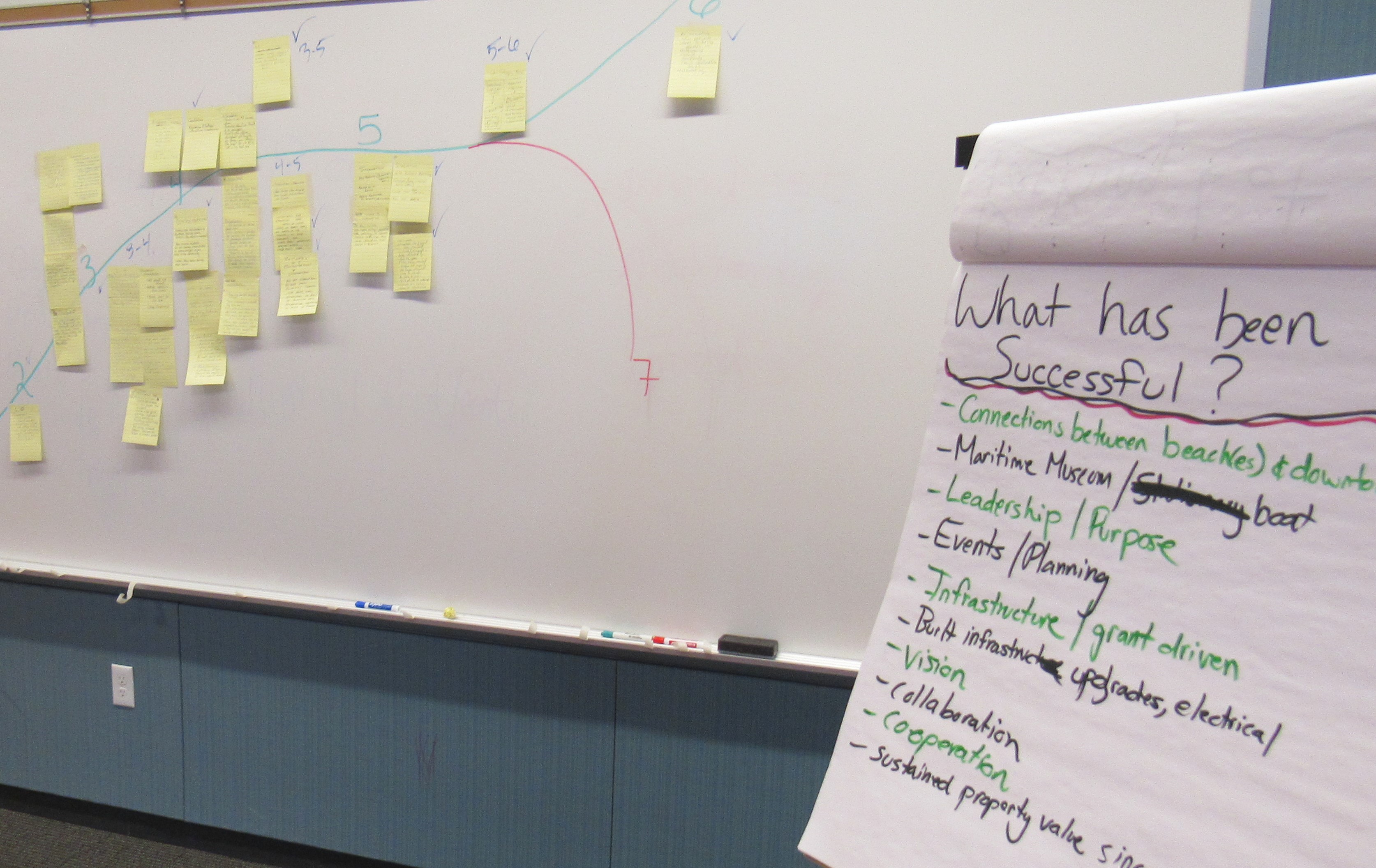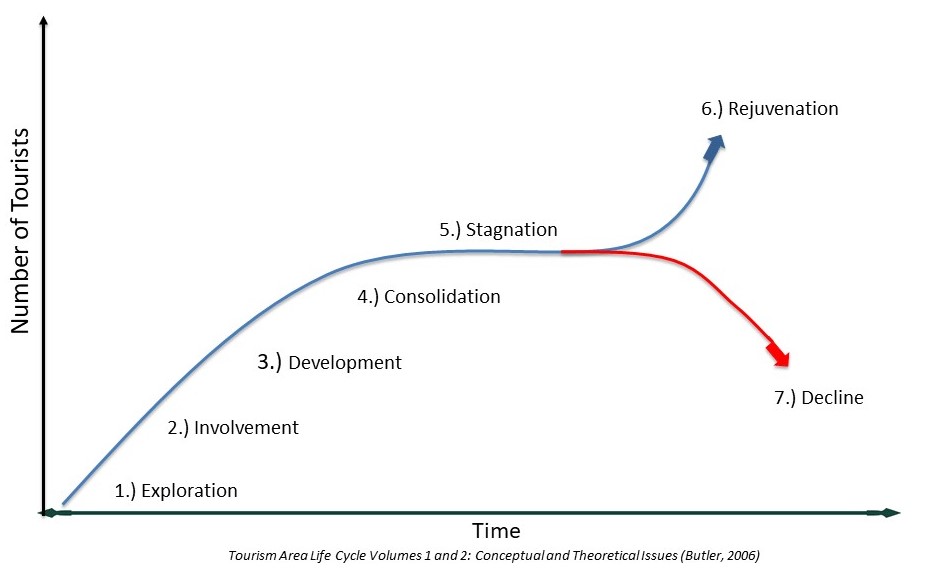Planning for Tourism
Led by MSU Extension tourism educators, Planning for Tourism walks communities through a facilitated process centered on understanding life-cycle models grounded in tourism scholarship that explore stages of growth and later helps stakeholders identify where they may be in establishing or sustaining themselves as a destination.
Using the Tourism Area Life Cycle (TALC) model (Diagram 1) as a conceptual framework to learn how destinations emerge and progress, stakeholders will actively determine where they may be on the model. Stakeholders will then launch into a series of collaborative steps designed by MSU Extension to help identify where they want (or don’t want) their community destination to be in the future.
Community engagement tools and techniques are then employed strategically to ensure all stakeholders are given equal opportunity to provide input. By capturing this collective input, leaders and residents can gauge where there is consensus around the TALC stages. Before progressing to the next phase of the program process, recognizing successes (and failures) first allows stakeholders to dive deeper into what efforts could be replicated or modified to strengthen their understanding of existing strategies to reach their goals.

After exploring TALC and identifying successes, stakeholders are then positioned to engage in the final phase geared at highlighting assets that are leverage-able, market-able, and enhance-able. Then, in groups, stakeholders are asked to uncover a plethora of assets they believe could help strengthen their goals of either becoming or sustaining themselves as a destination. By unearthing a myriad of assets for each category, stakeholders can then see the diversity of resources available to support destination development and prevent decline.

Equipped with a comprehensive foundation of the TALC model, a deeper understanding of stakeholder sentiment, and an extensive compilation of community-identified assets, MSU Extension tourism educators then converge stakeholders in wrap-up designed to chart their next steps once the program is completed.
There are multiple in-person and web-based program delivery options for communities or organizations interested in Planning for Tourism. Please inquiry with us directly to learn more.

Andy Northrop
Statewide Government and Community Vitality, Sustainable Tourism Educator
northro5@msu.edu
810-989-6331




 Print
Print Email
Email